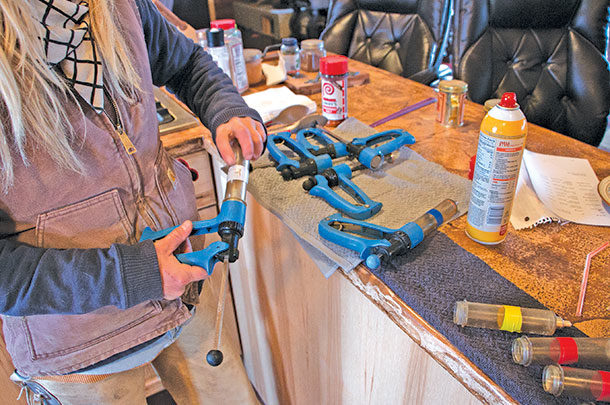Cattlemen have demonstrated a commitment to the integrity of today’s beef products by implementing sound cattle management practices. An appropriate herd health plan/protocol is an important element of an animal health and antibiotic stewardship program.
A strong herd health plan begins with a yearly production calendar that includes cattle nutrition, reproduction management, vaccination schedules and marketing, all of which are critical to sustainable beef cattle production. Management practices can be better matched with cattle needs by looking at the annual production cycle month by month.
The University of Nebraska – Lincoln Animal Science Department and Nebraska Beef Quality Assurance has examples of a beef production calendar and other herd health planning tools online (bqa.unl.edu).
Once a production calendar is developed, producers can work with their veterinarians to plan specific herd health protocols for management of their herds. A veterinarian can help a beef operation best tailor health management to deal with local diseases, parasites and other regional health issues. By identifying the herd health issues throughout the year, you can also understand how much pressure there is for each issue encountered.
In creating the production calendar, be sure to define operational goals. Brian Vander Ley, DVM, a veterinary epidemiologist with the University of Nebraska, says to beware getting caught up in “best management practice” mentality without considering all reasons for an operation’s existence.
The best management practice in the wrong place or at the wrong time is the worst management practice. Defining why a producer wants to be in business will help target what they do and how they go about getting it done.
Many producers cite financial income as their operation’s key reason for existing. But that’s more fitting as a definition for being in business. Most producers could make more money doing something else if it were really just about the money.
Any herd health intervention or management practice that conflicts with why a producer is in business and how they prefer to raise cattle will certainly induce unintended consequences that will be far more harmful than the problem the intervention was designed to solve.
If pressure is high, work with your team to identify potential preventative practices such as vaccines or management practice to reduce the risk and need for treatment with antimicrobials. With low pressure, judicious treatment with antimicrobials could be the best practice. These health risk pressures should be discussed within your veterinarian-client-patient relationship (VCPR) to determine the best protocol for your operation.
Developing relationships between producers, veterinarians, nutritionists and others is always key to herd health plans. These relationships are the environment in which goals can be clearly understood and plans to reach those goals can be implemented successfully.
A common herd health plan includes core vaccinations such as IBR, BVD, BRSV, PI3, clostridials, brucella, lepto, vibrio and so on, as well as core parasite controls. But there are additional considerations, and a veterinarian’s recommendations can better meet a herd’s needs. As previously noted, depending on the pressure or risk of specific health diagnosis, producers might consider additional preventative measures to reduce the need for treatment.
Nutrition is an important element of all herd health plans. Building a nutrition plan around utilizing available feedstuffs and water supplies is a vital part of the yearly management calendar. Additionally, cattle health and nutrition can’t be separated. Working with a qualified nutritionist can improve the economic bottom line and improve the value realized from a herd health program. With a Veterinary Feed Directive (VFD), producers have access to feed-grade antimicrobial for FDA-labeled diagnosis. These need to all be incorporated into the herd health plan.
Always remember key variables at relevant times. This year is teaching us hard lessons about the critical need to maintain cow body condition when the weather gets bad. Body condition score (BCS) along with other variables like pregnancy success, calving distribution and others can help monitor progress toward defined goals and warn of impending trouble. We often focus more on procedures and products and miss critical opportunities to let our livestock tell us how they are doing.
Herd health plans assist the beef cattle industry to develop strong stewardship and sustainable plans. These plans build upon the strengths of Beef Quality Assurance practices implemented throughout the industry to ensure a safe, wholesome beef product for today’s consumers. The time is now to build stewardship through your herd health plan. ![]()
Brian Vander Ley, DVM, Ph.D., is a veterinary epidemiologist at the University of Nebraska’s Great Plains Veterinary Education Center in Clay Center, Nebraska. Email Brian Vander Ley.
For more information about Nebraska Beef Quality Assurance, or to get BQA certification, contact Rob Eirich, UNL extension educator and Nebraska director of BQA at the UNL Panhandle Research and Extension Center, or
(308) 632-1230.

-
Rob Eirich
- Nebraska Beef Quality Assurance
- University of Nebraska – Lincoln Extension
- Email Rob Eirich










